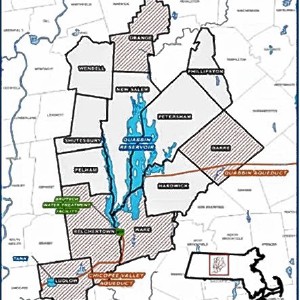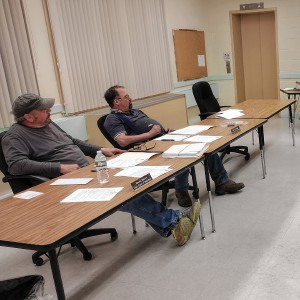Gardner exploring alternatives to sludge expansion
| Published: 05-23-2023 4:14 PM |
GARDNER – Since a 4.3-acre expansion of the wastewater sludge landfill in Gardner was first proposed, environmental organizations – led by the Athol-based Millers River Watershed Council – have urged city officials to examine alternatives.
After first dismissing those pleas, the city recently contracted with SoMax Circular Solutions to undertake a feasibility study for converting sludge into energy.
“The study shows that some sort of HTC (hydrothermal carbonization) technology project could be viable for Gardner, with a big capital investment but with a potentially good return on investment,” said MRWC executive director Ivan Ussach.
Ussach added that, should the city decide to construct its own HTC facility, it could potentially prove more cost-effective than expansion.
The Athol Daily News reached out to Gardner officials for comment, but did not receive a response by press time.
Following a site visit to the city’s sludge landfill in February, state officials ordered Gardner to put together an Environmental Impact Report detailing the expansion’s potential effects on the surrounding environment. The city’s engineering consultant, Woodard & Curran, pegged the cost of preparing the EIR at more than $300,000. The firm estimates the cost of expansion at $6.3 million and capping the landfill to allow for expansion at nearly $3 million.
The city has already paid Woodard & Curran more than $570,000 for previous engineering work, as well as about $200,000 to the city’s previous engineering consultant.
“We feel that when the finances for the landfill expansion are put up against these other alternatives, it continues to raise questions about not only the environmental aspects of the project, but it also says one should be seriously questioning the finances, in terms of whether this is the best project for the city, for the taxpayers, as well as the environment,” said Ussach.
Article continues after...
Yesterday's Most Read Articles
The SoMax study found that the city could take advantage of federal tax credits included in the Inflation Reduction Act, thereby potentially recovering the cost of investment in an HTC facility within 5-10 years. It then could potentially turn a profit by accepting sludge from other communities.
“This is great news for Gardner,” said Ussach. “It appears feasible that Gardner could completely eliminate the need for the landfill expansion and make some money to boot, which should please the folks in City Hall.”
Meanwhile, the state Dept. of Environmental Protection (MADEP) is considering an appeal brought by 10 Gardner taxpayers challenging the wetlands permit issued by the Gardner Conservation Commission in support of the landfill expansion. The appeal claims the commission made its decision without sufficiently considering a number of significant environmental factors. MADEP is reviewing all existing documentation, as well as requesting additional information from the city. Department officials can’t issue a decision on the appeal until after the process set forth in the Massachusetts Environmental Policy Act (MEPA) process has been completed. That includes a ruling on the EIR to be submitted by the city.
While those involved wait for a decision on the citizens’ appeal, city officials are left to weigh the feasibility of the city constructing its HTC facility, transporting sludge to a Fitchburg facility—expected to be online in 2025—or push ahead with plans for expansion.
The group fighting the project, the Coalition for a Sustainable Alternative to Expanding Gardner’s Sludge Landfill includes the MRWC, Athol Bird and Nature Club, Gardner Clean Air, Clean Water Action, the Connecticut River Conservancy, MassPIRG, the Mass. Rivers Alliance, Mount Grace Land Conservation Trust and the North County Land Trust. The coalition fears expansion would lead to contamination of wetlands in Gardner and Templeton; pollution that would eventually makes its way into Otter River and from there into the Millers and Connecticut rivers.
Greg Vine can be reached at gvineadn@gmail.com.

 With eye toward teaching firearm safety, Mahar’s Junior ROTC adding air rifles
With eye toward teaching firearm safety, Mahar’s Junior ROTC adding air rifles Quabbin region studied for MWRA expansion
Quabbin region studied for MWRA expansion Phillipston board opens talks on new police chief
Phillipston board opens talks on new police chief Sportsman’s Corner: Quabbin opens this Saturday
Sportsman’s Corner: Quabbin opens this Saturday